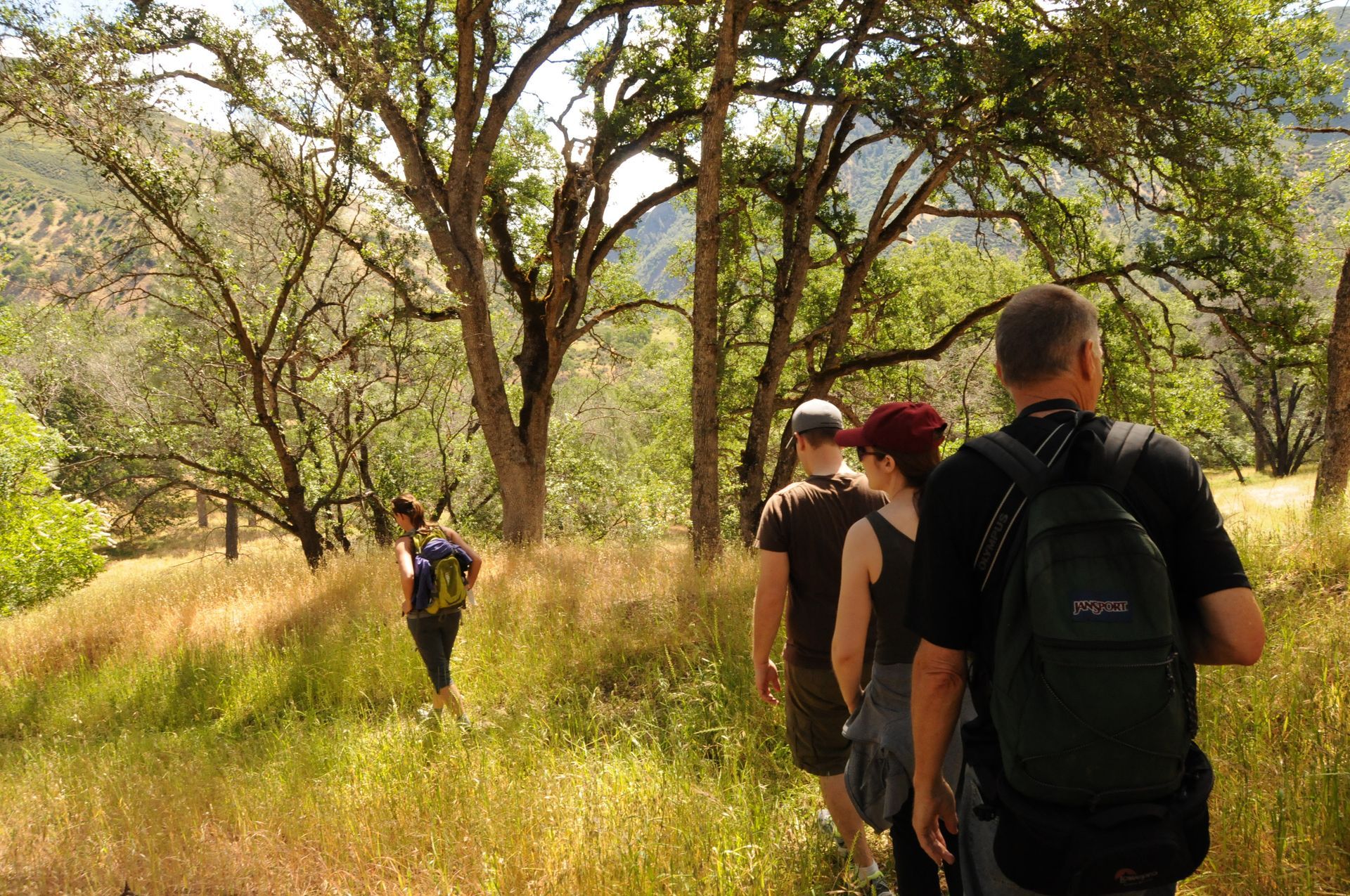Monumental Questions - What Plant Communities are in Berryessa Snow Mountain National Monument?

Oak Woodland in Berryessa Snow Mountain National Monument
What plant communities are present in Berryessa Snow Mountain National Monument?
The lowest point of Berryessa Snow Mountain National Monument is a couple hundred feet above sea level while the highest point (Snow Mountain) is over 7,000 feet high. This difference, in addition to the steep hillsides, deep canyons, and wide valleys, creates a home for many different plant communities within the monument boundaries.
Chaparral
Chaparral is characterized by short, densely packed shrubs with small, hard, waxy leaves (called sclerophyllous leaves). Chaparral plants become intertwined as they grow which makes hiking through them nearly impossible. Chaparral is often found on impoverished clay or rocky soils and is often associated with serpentine soils. Examples of plants usually found in chaparral are Manzanita (Arctostaphylos sp.), Chamise (Adenostoma fasciculatum), Ceanothus (Ceanothus sp.), Toyon (Heteromeles arbutifolia), and Blue Oaks (Querus douglasii).
Mixed Evergreen Forest
These forests are dense stands of trees with their canopies touching one another. The trees are adapted to arid environments and are prone to wildfires. Because of the frequent wildfires, there are not many stands of ancient trees and many can “stump sprout” after a fire. Live Oak (Quercus agriflora), Black Oak (Quercus kelloggii), California Bay (Umbellularia californica), Douglas Firs (Pseudotsuga menziesii), and Madrone (Arbutus menziesii) are often found in mixed evergreen forests.
Oak Woodland
Oak woodlands are the most widespread plant community in California and are composed of both deciduous and evergreen oaks, an herbaceous understory, and shrubs. These woodlands provide habitat to over 120 species of mammals, more than 147 species of birds, 60 species of reptiles and amphibians, and more than 5000 species of insects. These hardwoods also attract many forms of fungi.
Riparian Forest
Riparian forests are found alongside riverbanks, streams, and other bodies of water with a stable water source. These areas have moist soil and relatively cooler temperatures. Because of the reliable water source, plants in this ecosystem do not need to be adapted to a dry climate in order to survive. When enjoying a riparian forest, one will find a wide variety of oak trees (Quercus sp.), alders (Alnus sp.), manroot (Marah watsonii), Fremont Cottonwood (Populus fremontii), Black Cottonwood (Populus trichocarpa), Black Walnut (Juglans hindsii), California Buckeye (Aesculus californica), Elegant Clarkia (Clarkia unguiculata), and Western Redbud (Cercis occidentalis).
Coniferous Forest
Structurally, these forests are rather simple, generally consisting of two layers: an overstory and understory. Some forests may support an intermediate layer of shrubs. The understory is generally herbaceous, dominated by grasses and herbaceous perennials which are often subject to ecologically important wildfires. In the Berryessa Snow Mountain National Monument, coniferous forests include Gray Pine (Pinus sabiniana), Ponderosa Pine (Pinus ponderosa), Sugar Cone Pine (Pinus lambertiana), Douglas Fir (Pseudotsuga menziesii), Knobcone Pine (Pinus attenuate), Incense Cedar (Calocedrus decurrens), and California Red Fir (Abies magnifica).
Closed Cone Pine Forest
Closed cone pine forests are dominated by coniferous trees whose hard, pitch-covered cones require heat or fire to open. Many trees in these forests possess flammable chemicals in their needles and bark to fuel the fire and encourage the cones to open. Not all of the trees in a closed cone pine forest are close-coned but the forest is dominated by those that are. In the monument region, you will find Macnab Cypress (Hesperocyparis macnabiana), California Juniper (Juniperus californica), and Sargent Cypress (Hesperocyparis sargentii). Interesting note, to increase accuracy, Cedar Roughs Wilderness, west of Lake Berryessa, should be named Sargent Cypress Wilderness as this is the dominant tree in the area.
-Nate Lillge; nlillge@tuleyome.org
Adventures and Engagement Director
Certified California Naturalist
RECENT ARTICLES






